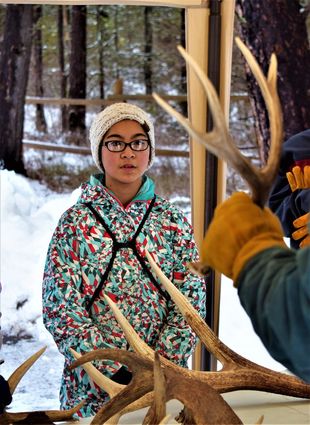OUTDOOR LEARNING
FSPW teaches junior high students winter lessons
January 31, 2019

Shana Neesvig
Martha Klaus carefully observes the antler presented before her by Glenn Garrison last Thursday during the Friends of the Scotchman Peaks Wilderness Winter Tracks program. Junior high students from Noxon and Thompson Falls attended the field trip at North Shore Campground in Trout Creek.
There's nothing like the great outdoors. During these short, dark, dreary winter days, nothing brings a body to life more than the feeling of cool, crisp air tingling cheeks, noses, fingers and toes.
The deep snow and balmy 25-degree weather did not stop Noxon or Thompson Falls schools' 46 juni...
For access to this article please
sign in or
subscribe.



Reader Comments(0)